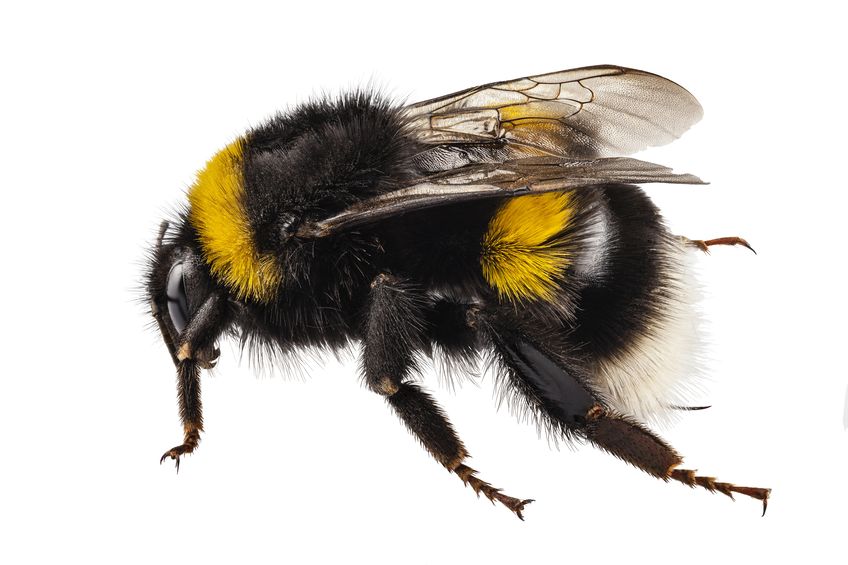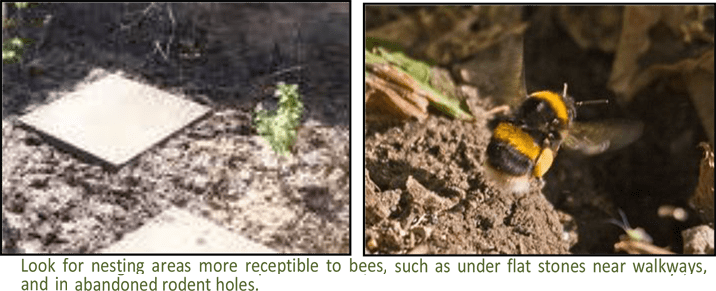Identification and Life Cycle
Bumblebees (Bombus Spp), are also known as “humble bees”. These social bees are commonly mistaken for carpenter bees. Bumble bees are gentle, slow and harmless, but can be aggressive if they feel threatened.
They are large, round, and fuzzy, and approximately 3/4 to 1 1/2 – inches long. Bumblebees are generally black and yellow in color, often with an orange or white band at its tail end.
In early spring, you may see the queen bees flying around the early blooming flowers searching for nectar and pollen to turn into honey. They will produce enough to only feed their young. The queen will then locate a suitalbe site to build her nest in the ground. The most common nesting sites are in old rodent burrows, clumps of dry grass, wood chips, compost piles, old logs, and under large, flat stones.
She starts building a new nest with a ball of pollen and wax into which she lays approximately 6 eggs. Once hatched, they eventually pupate. A nest may contain up to 300-500 bees. Toward the end of summer, males and new queens develop. After mating, the new queen(s) burrow into the ground where she spends the winter months hibernating. The remaining workers and male bees die out in the fall.




Comments are closed.